Vegan Rum Babas
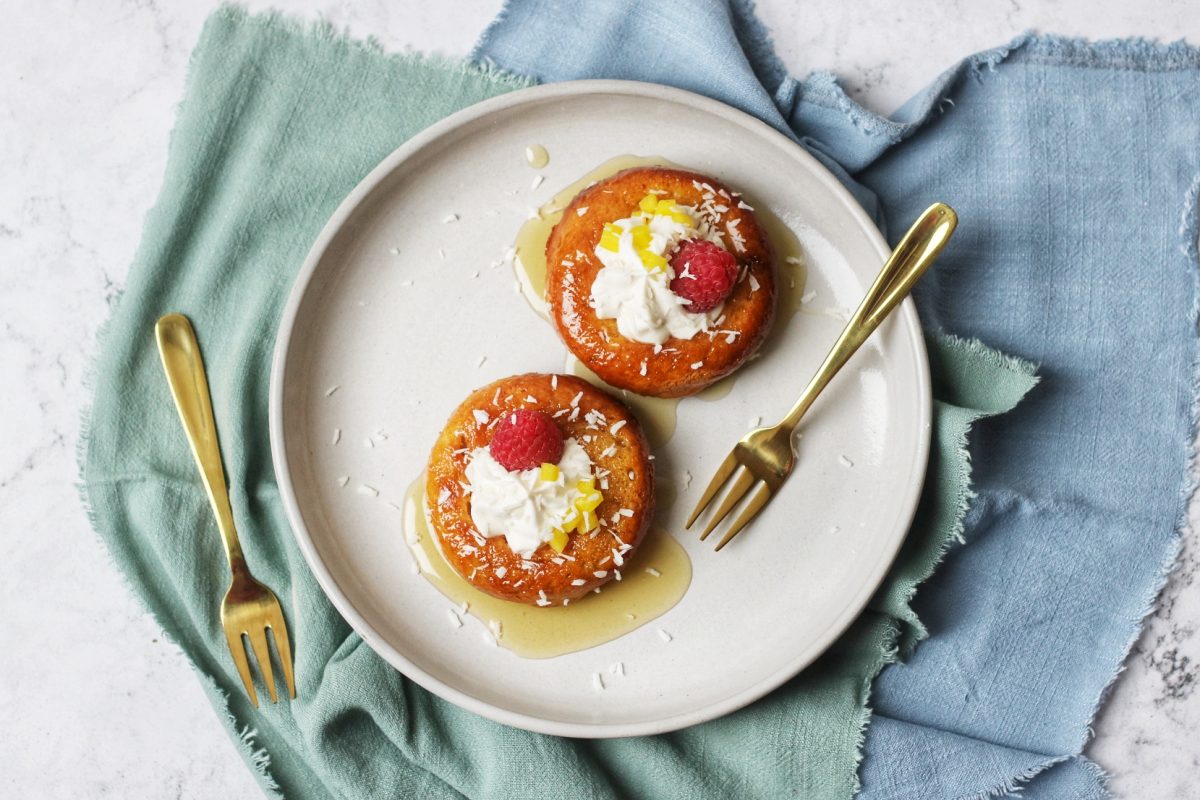
These Vegan Rum Babas are soaked in rum. They are unapologetically boozy and topped with coconut cream and pineapple for a tropical twist on this French classic. Get the recipe below.
Page Contents
Vegan Savarin
If you’ve not heard of a savarin before then don’t worry, you’re not alone! When I first saw savarin featured on the Great British Bake Off I had no idea what it was. Savarin is a type of cake made with yeast, usually shaped like a doughnut. When baked it has the texture of a dry brioche, it is then soaked in a flavoured syrup and served with whipped cream/custard and fruit.
The ingredients list reads like a strange mix between a loaf of bread and a sponge cake. On the one hand you will find strong white bread flour and fast active yeast, on the other is sugar, eggs, milk and butter. Unless you’re making a vegan savarin of course! To make a vegan savarin you will need plant-based milk and butter substitutes.
To take into account that there are no eggs in this recipe, I use a high-fat plant milk (coconut milk to be precise) and extra non-dairy butter.
The enriched dough needs to prove just like any other bread so you do need to factor this in to your cooking times (and I’ve indicated total proving time in the recipe below). Once it’s finished proving dough is stretchy but pipeable which is rather unique. To get the traditional round savarin shape I pipe the dough into silicone doughnut moulds that have been dusted with caster sugar. They pop out of the moulds easily before being soaked in boozy syrup.
Rhum au Baba (aka Rum Baba)
Baba au rhum is a famous French pattiserie that is made with savarin dough. They were originally served around Christmas and Easter but you can now find them year round in French patisseries.
Sometimes Rum Babas are a round shape, a bit like a doughnut, served with whipped cream/custard and fruit. They can also be baked in a dariole mould so that it resembles a muffin. When they are shaped in this way, they are sometimes split in half before filling with pastry cream. They might also be served as a dessert with a healthy drizzle of rum syrup allover the plate.
Whatever their shape, they are soaked in a rum based syrup making it boozy, sticky and sweet!
The rum syrup should be luke warm (but not hot) when you come to soaking, as should the cakes. They will be very fragile so do handle them with care!
I decided to make my vegan rum babas in the traditional savarin shape. I love the savarin shape as it’s perfect for filling with a healthy dollop of whipped cream and topping with fruit. I chose mango and raspberries, dusted with desiccated coconut, for a tropical twist.
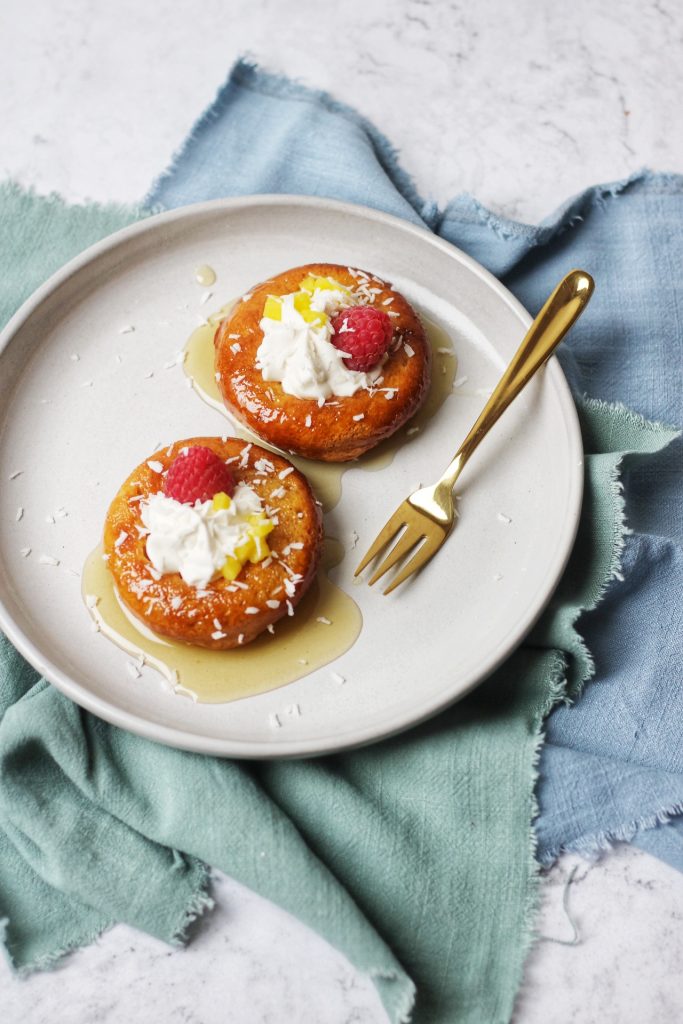
The recipe
My recipe will make four vegan rum babas. They are the perfect plant based dessert recipe to serve at a dinner party or on a special occasion.
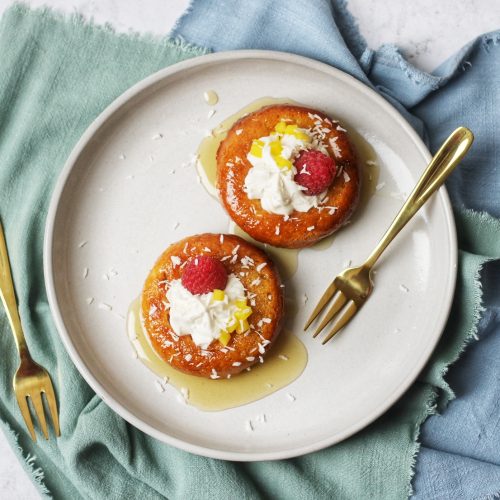
Vegan Rum Babas
Equipment
- Either doughnut tins, savarin moulds or dariole moulds.
Ingredients
For the cakes
- 225 grams strong white bread flour
- 7 grams fast action yeast
- 50 grams caster sugar plus extra for lining the tins/moulds
- 150 millilitres coconut milk
- 100 grams non-dairy butter plus extra for lining the tins/moulds
For the syrup
- 150 millilitres water
- 100 millilitres dark rum
- 250 grams caster sugar
For the cream
- 150 millilitres non-dairy cream (e.g. Elmlea Plant)
- 4 tbsp icing sugar
- 1 tsp vanilla paste
For the decoration
- mango
- raspberries
- desiccated coconut
Instructions
To make the syrup soaked cakes
- Add the flour, yeast and sugar to a large mixing bowl and whisk so that the sugar and yeast is evenly distributed.
- Pour the milk into the bowl and mix until it is coming together into a ball of dough. Next, either knead by hand for 10 minutes or using a mixer for 5 minutes until the dough is smooth and shiny.
- Add the butter to the bowl and work into the dough (again either by hand using a kneading action or by using the mixer). It will be very tricky to work with so a dough scraper will come in useful if you are doing it by hand. It will take a little while for the butter to incorporate so keep persevering! Once it's fully combined the dough will be loose and silky smooth but stretchy.
- Cover the bowl with clingfilm or a damp cloth and place somewhere warm to rise for at least an hour or until doubled in size.
- While the dough is proving, line your tins/moulds by rubbing them with a little butter and then dusting them with caster sugar,
- Once the dough has risen, spoon it into a large piping bag. Cut the end off of the piping bag and then pipe the dough into your tins/moulds. Be cautious not to fill more than 3/4 full giving them enough room to continue to rise.
- Leave the dough to rise for a further 30 minutes. During this time preheat your oven to 180C / 350F / gas mark 4.
- Bake in the centre of the oven for 20-25 minutes or until they are lightly golden brown.
- When the cakes have cooked, let them cool slightly before attempting to remove from their tins / moulds.
- While the cakes cool, add the water, sugar and rum to a saucepan to make the syrup. Heat on a low-medium heat until the sugar has dissolved completely.
- Pour the syrup into a large dish. Remove the cakes from their tins and then sit them in the syrup.
- Once the cakes have soaked up the syrup on one side, flip them over and let them sit again until they are saturated with syrup.
- The cakes should be left to cool completely before serving with the cream and fruit.
To make the vanilla cream
- Immediately before serving, add the non-dairy cream, icing sugar and vanilla paste to a mixing bowl. Whisk on high until the cream is thick and pipeable.
- Add a star shaped nozzle to a piping bag and fill with the whipped cream.
To decorate
- Place 1 or 2 cakes on to a plate with a little extra syrup and fill / top with the cream.
- Add a raspberry or two, diced mango cubes and desiccated coconut to serve.
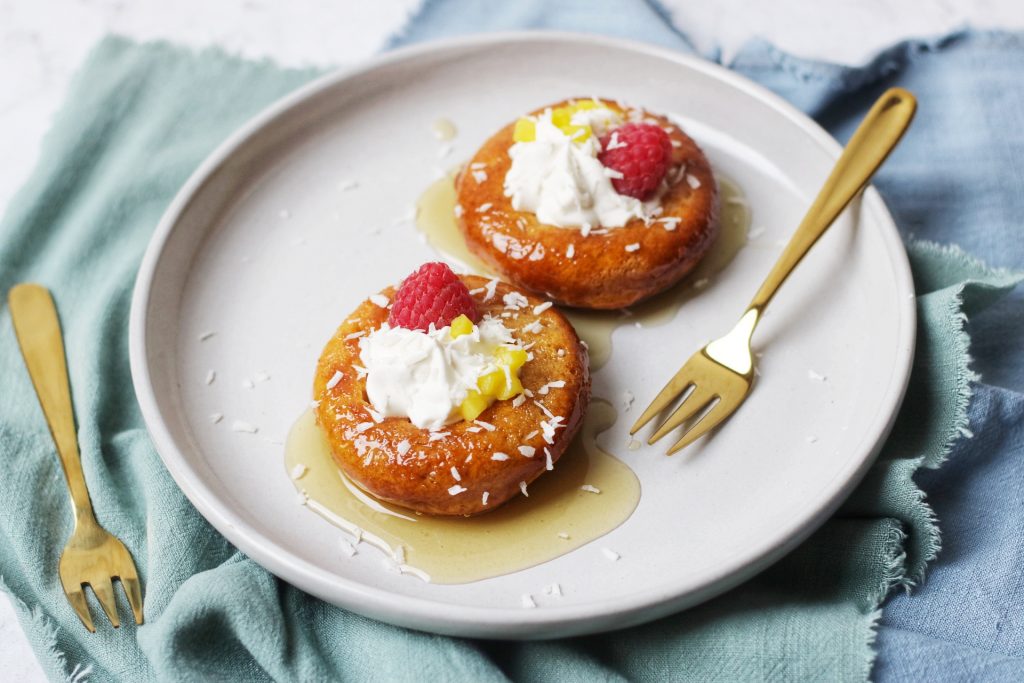
More recipes inspired by the Great British Bake Off
If you’re also baking along to the Great British Bake Off, share your recipes with the hashtag #gbbobakealong I can’t wait to see what you make.
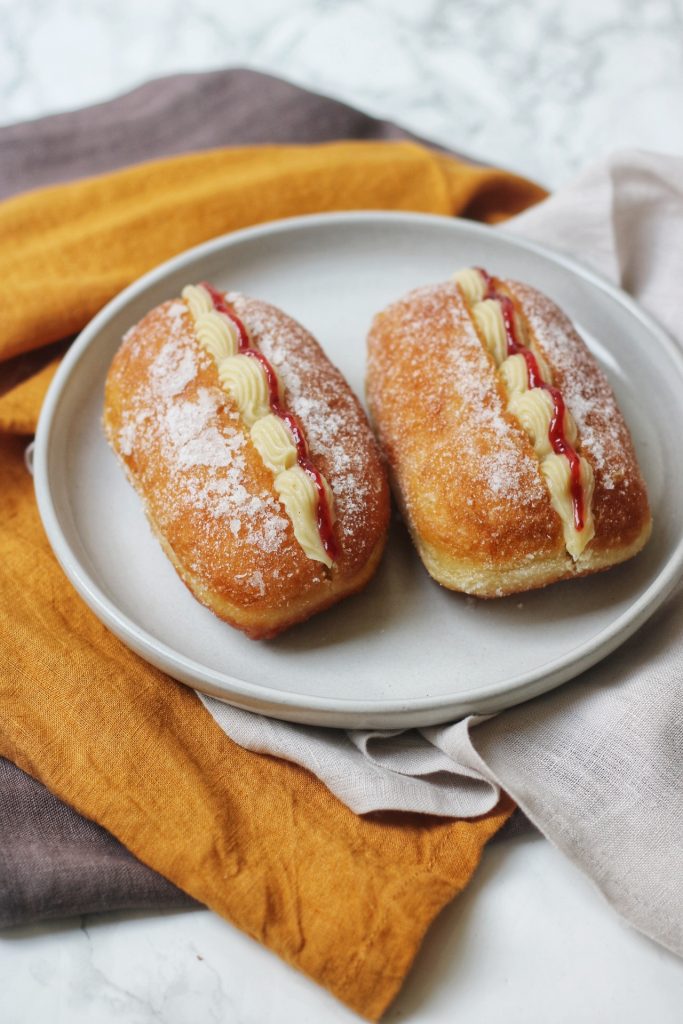
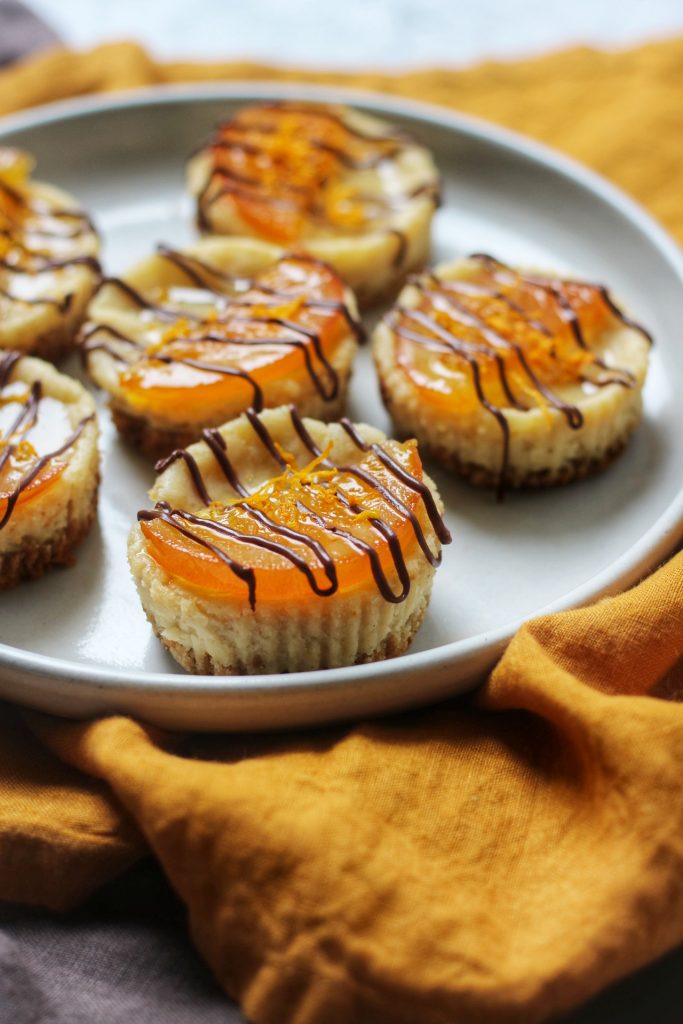
I’ve never made rum babas before, vegan or otherwise, but these were really easy to make and tasted delicious. I used 120ml barista oat milk and 30ml vegan cream instead of coconut milk and it worked perfectly. Thank you for the recipe, I will definitely make these again.
I’m so pleased you enjoyed them. They are definitely one of my favourite desserts. I might have to make them again this week…
Really gutted, this recipe isn’t clear enough about how to add the butter. “Add the butter to the bowl and work into the dough (again either by hand or using the mixer)” this needs to be way more specific, in the end it ended up a buttery mess because I had to guess how to do it. You shouldn’t have to check other recipes and YouTube to make sure your recipe is right! I knew it wouldn’t rise but left it in hopes anyway. Unsurprisingly, it didn’t. I then had to check other recipes to see how and when they add the butter. I’ve found a different recipe that makes it far clearer. The rest of the recipe looks and sounds great, and I’m sure better bakers than me knew instinctively what to do, but as a novice to baking rum babas and bready desserts, this just didn’t cut it. I’m miffed that I’ve wasted a load of ingredients and am having to start again tomorrow when it’s for a birthday treat for someone.
Hi Hannah, I’m so sorry it didn’t work for you. I really appreciate your feedback. I’ll update it to make it much clearer.
Hi.
Should the butter be melted when incorporating it in the dough or not. It didn’t combine very well when I put it in.
Hi Isabel, it doesn’t need melting. You might struggle if it’s too hard but it should be fine if softened. Hope that helps!